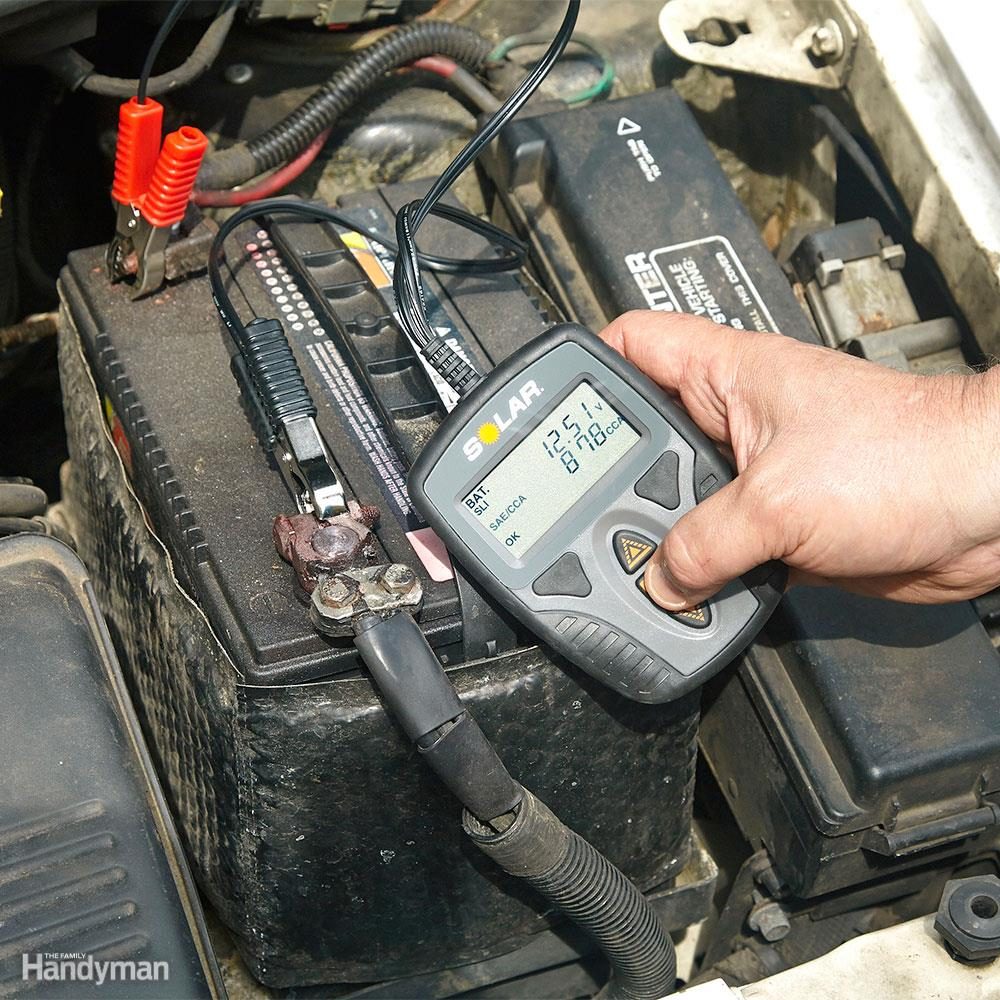
Test your car battery
Car batteries have a limited life. Don’t wait for yours to fail and leave you stranded. You can check the condition of the battery, starting, and entire charging system with a computerized battery tester. (Here’s how to test a car battery, step by step.) Besides testing voltage, a computerized battery tester checks for internal resistance and conductance, giving you a good idea of the battery’s overall condition. Plus, the tester also checks the condition of your starter and alternator. Make sure you buy a battery tester that works on conventional lead acid batteries, as well as gel and absorbed glass mat (AGM) styles. That way you can use the same tester on your motorcycle and lawn and garden equipment. Don’t want to invest in a tester? Some auto parts stores will test yours for free.
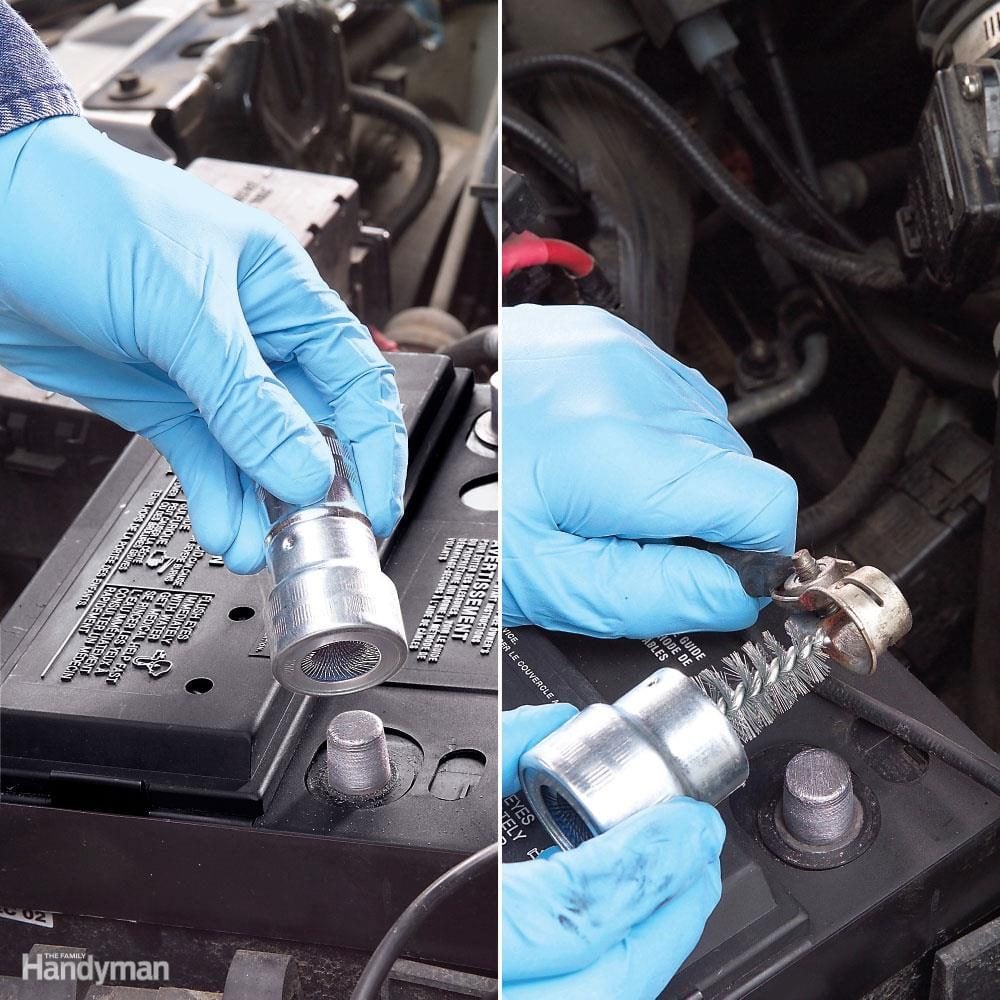
Clean your battery terminals
Corrosion buildup on battery posts and terminals can cause hard starting problems in cold weather and prevent your charging system from fully recharging your battery. Disconnect the negative cable first, then the positive cable. Clean the battery terminal posts using a battery cleaning tool or wire brush. Then clean the cable terminals. Clean off all grease and acid residue from the top of the battery with a paper towel. Then re-install the positive cable terminal, followed by the negative cable.
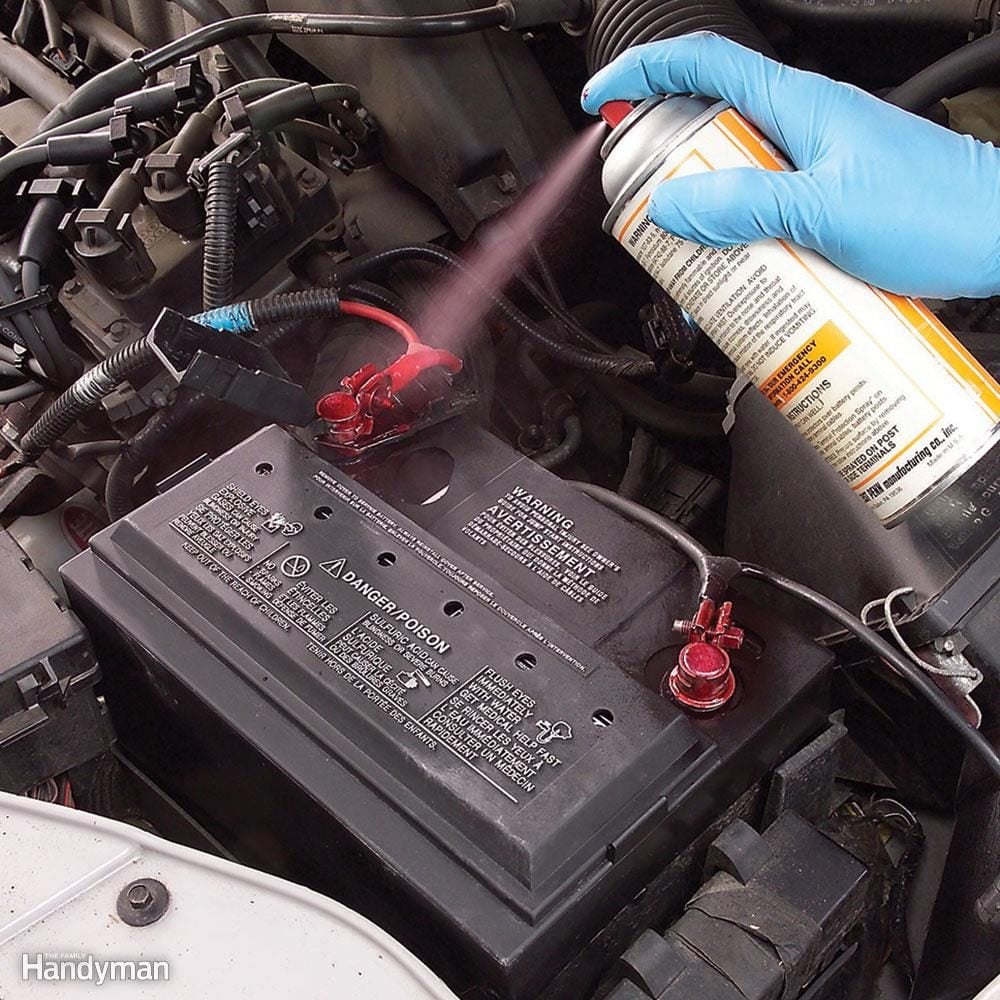
Protect your battery terminals
Reduce future battery terminal corrosion with a battery terminal protectant spray. Once the battery terminals are cleaned and re-installed, spray each terminal with a liberal coating of battery terminal protectant spray.
Find out more ways to extend the life of your car battery.
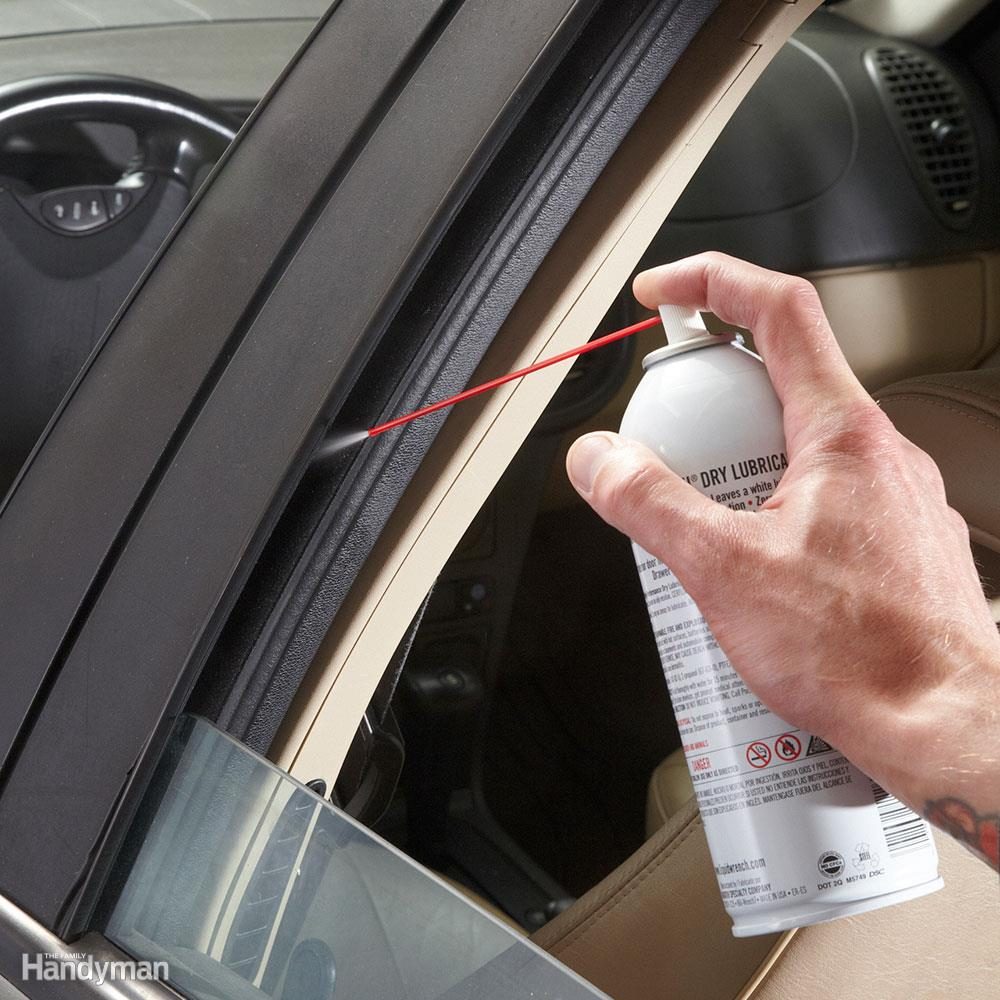
Lubricate window tracks
Freezing water can seep into the window tracks and create drag when you try to open the window. That drag can damage the window regulator cables. You can avoid the problem entirely by lubricating the window tracks with spray silicone or dry teflon spray lubricant. Lower the window and shoot the spray right into the front and back window track. Apply enough lube so it drips all the way down the track. Then operate the window through several open and close cycles to spread the lube along the entire track. Use glass cleaner and a paper towel to remove any spray that lands on the glass.
This genius hack will keep your car windows from fogging up.
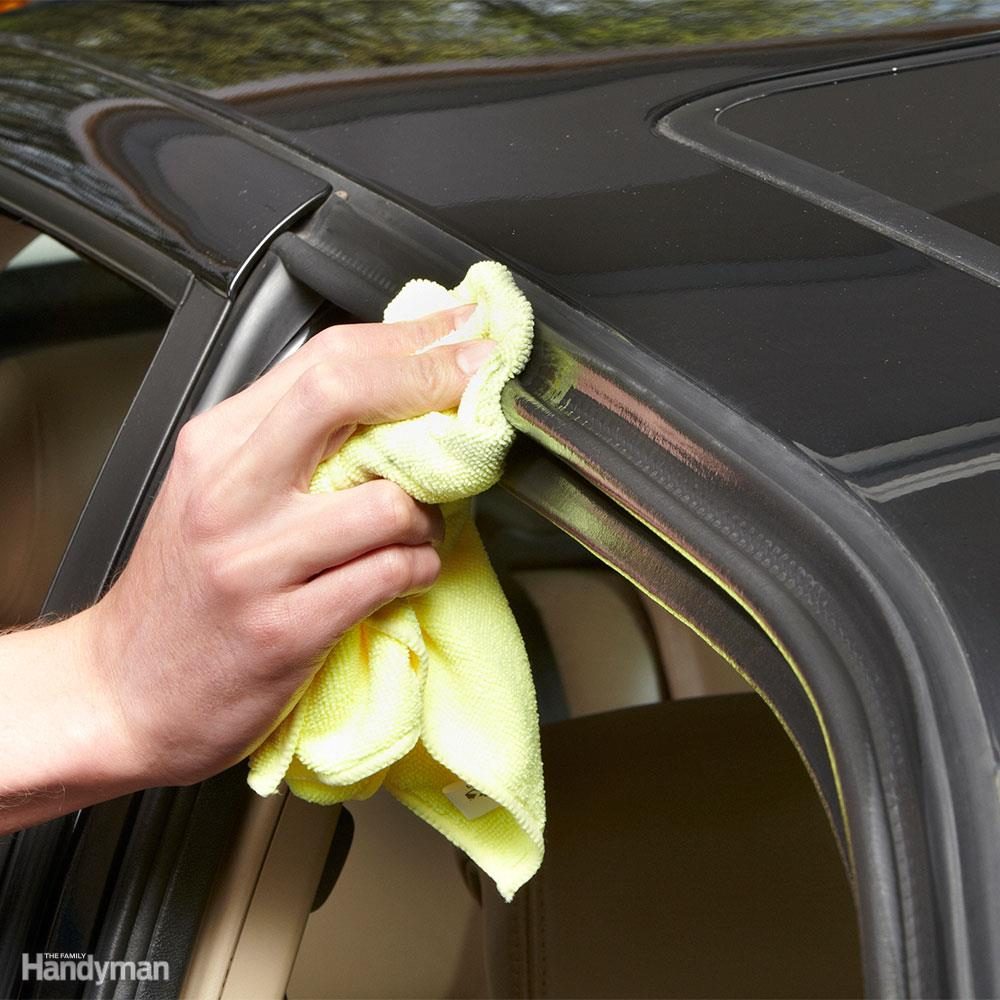
Lube weather stripping
If water seeps between your door and weather stripping and freezes, you could be frozen out of your car or truck. To prevent the water from freezing you out, coat both the weather stripping and the mating door surfaces with spray silicone. To avoid spraying silicone into your car’s interior, spray it directly onto a clean rag. Then wipe the silicone lube onto your door and trunk weatherstripping. Repeat the procedure on door mating surfaces and the trunk lid.
Discover another trick that’ll prevent your vehicle from freezing over.
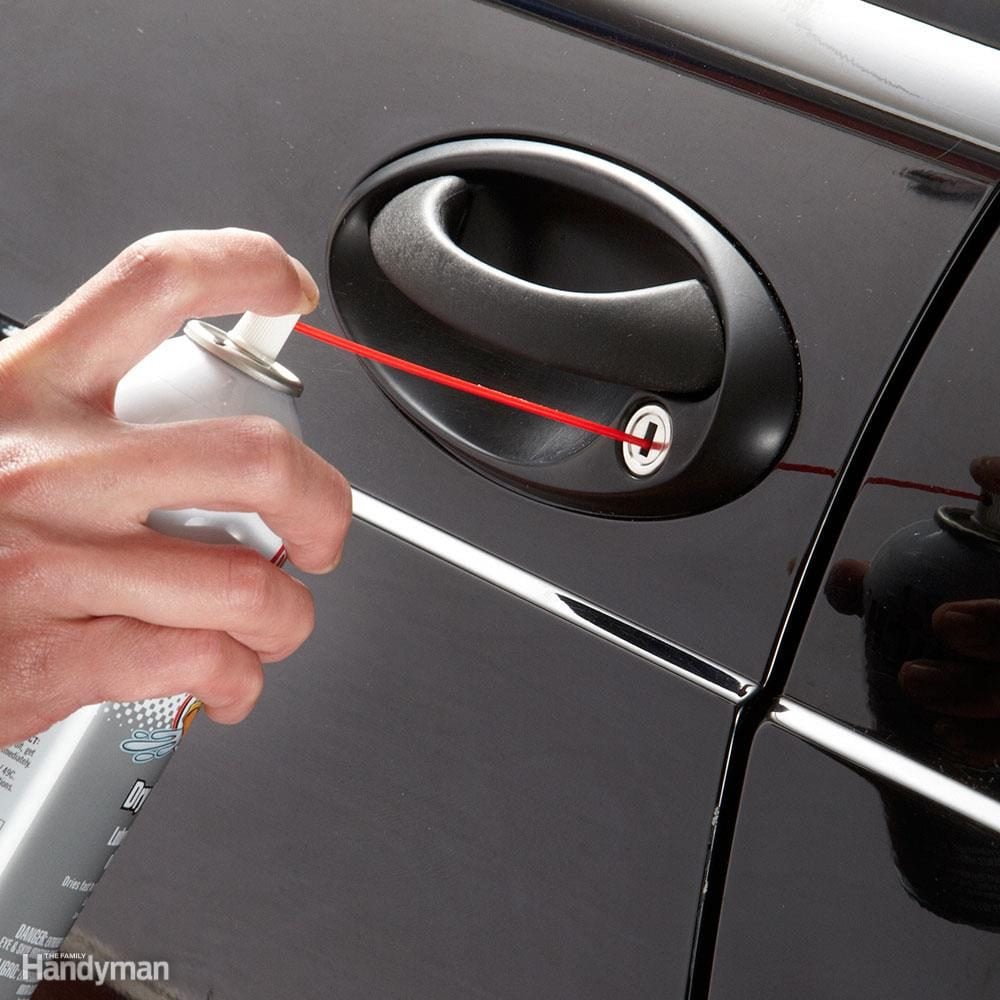
Lube your door locks
You probably don’t use your door and trunk locks very much if you have remote keyless entry, but that’s no reason to ignore them. In fact, if you don’t keep the lock cylinders lubricated they’ll corrode, making it impossible for you to use your key. If your key fob battery ever dies, you’ll be locked out and have to call a locksmith. Lubricating door and truck lock cylinders is easy. Puffing graphite lock lubricant into the keyway works well, as long as you don’t overdo it. Dry Teflon spray lube is another option. Shake the spray can to distribute the Teflon and shoot the liquid into the lock cylinder. The solvent will dissolve any sticky parts. Once the solvent evaporates, the internal lock parts will be coated in Teflon particles, allowing the lock to operate smoothly.
Protect your car with these clever anti-theft devices.
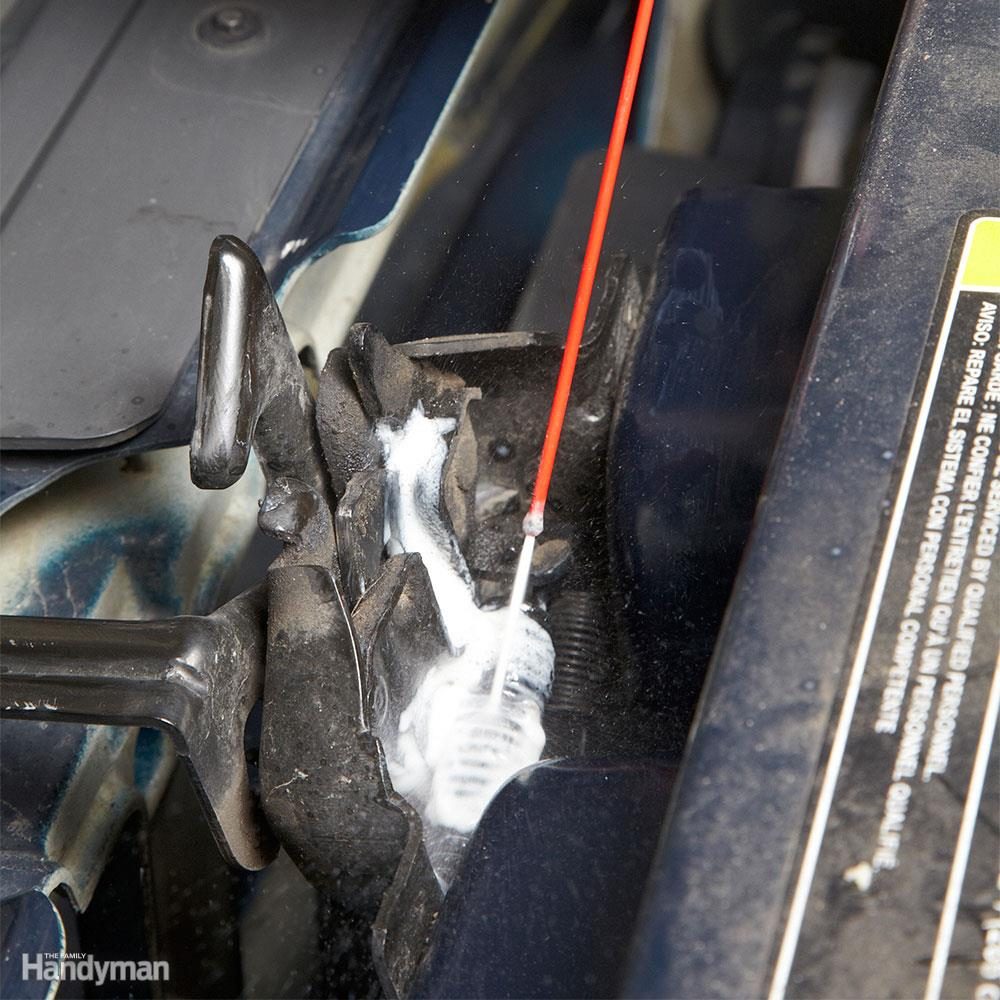
Lube latches and hinges
The last thing you want to deal with when you’ve got a dead battery is a sticking hood latch. Since the latch mechanism sits right behind your grille, it corrodes and seizes from all the salt spray that gets kicked up by the cars in front of you. You can prevent that corrosion by lubricating the latch mechanism before the snow flies. Just pop the hood and soak the latch with spray lithium grease. Open and close the hood a few times to work the lube into the latch and spring mechanism. Then close the hood and forget about it for the rest of the winter. It’ll pop open without any problems when you need to get under the hood.
Here’s how often you should be washing your car in the winter.
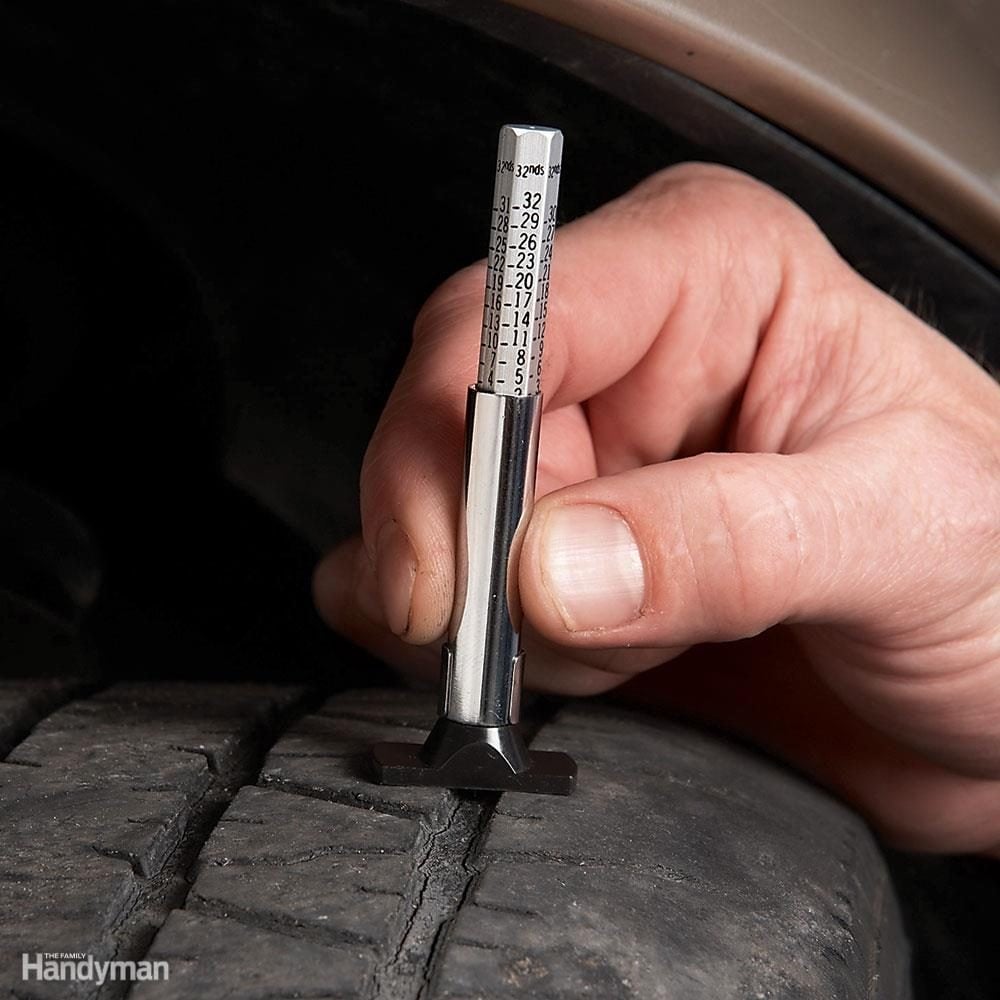
Check tire tread depth
Worn tires are your worst enemy in winter. They increase your stopping distance and decrease stability on wet roads. Independent tests have shown that tire traction decreases dramatically once your tires wear beyond 1/8-inch (3 millimetres). You can try to slide by through winter on low tread, but that’s exactly what you’ll be doing—sliding. A single skid into the curb at 8 km/h can easily cause $1,500 worth of damage to suspension and steering components. Sure, your insurance will cover it, but you’ll have to pay the deductible and it’ll count as an at-fault accident, raising your premiums for years. For about the cost of a single deductible, you can buy new tires or install winter tires and avoid those slip and slide accidents. To check the depth of your tread, use an inexpensive tire tread depth gauge (from any auto parts store). Check the tread depth in the centre and outer edges of each tire. If your readings are less than 1/8-inch, head right to a tire store.
Here’s what you can do to extend the life of your tires.
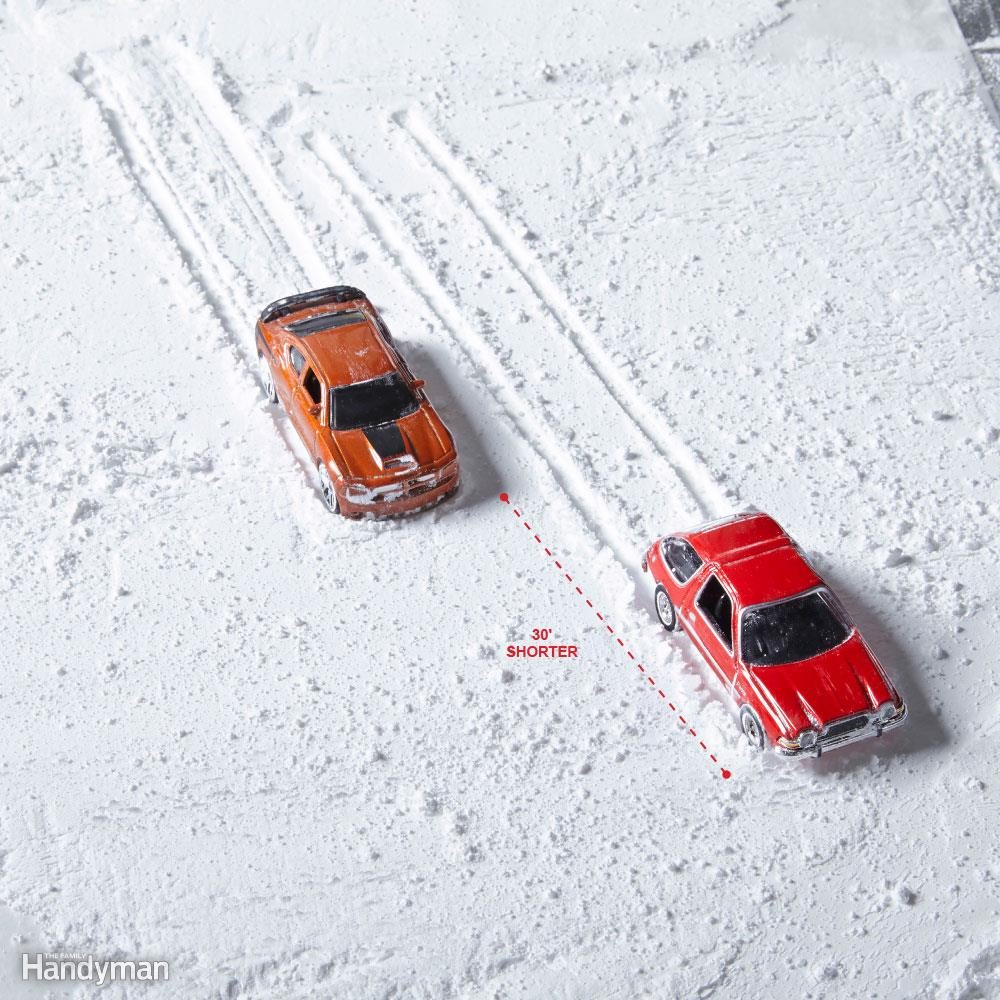
Consider winter tires
Winter tires could save your life. Winter tires provide much more traction on snow, getting you started 33 per cent faster from a stop sign and reducing your stopping distance by almost 30 feet (9 metres) compared to all-season tires. Winter tires even perform better on ice, stopping you 48 per cent faster and reducing side skid in turns. A set of four winter tires costs $600 or more, depending on your wheel size. If you have the tires mounted on your existing wheels, you’ll have to pay a shop to swap them each spring and fall. Sure, winter tires cost a lot. But consider that you’re getting a lot for your money. When you factor in the better stopping distance and handling in turns, it’s easy to see how winter tires could prevent an “at-fault” accident. If your collision deductible is in the $500 to $1,000 range, winter tires could actually pay for themselves in a single season if they keep you out of an accident.
Here’s exactly when you should switch to winter tires.
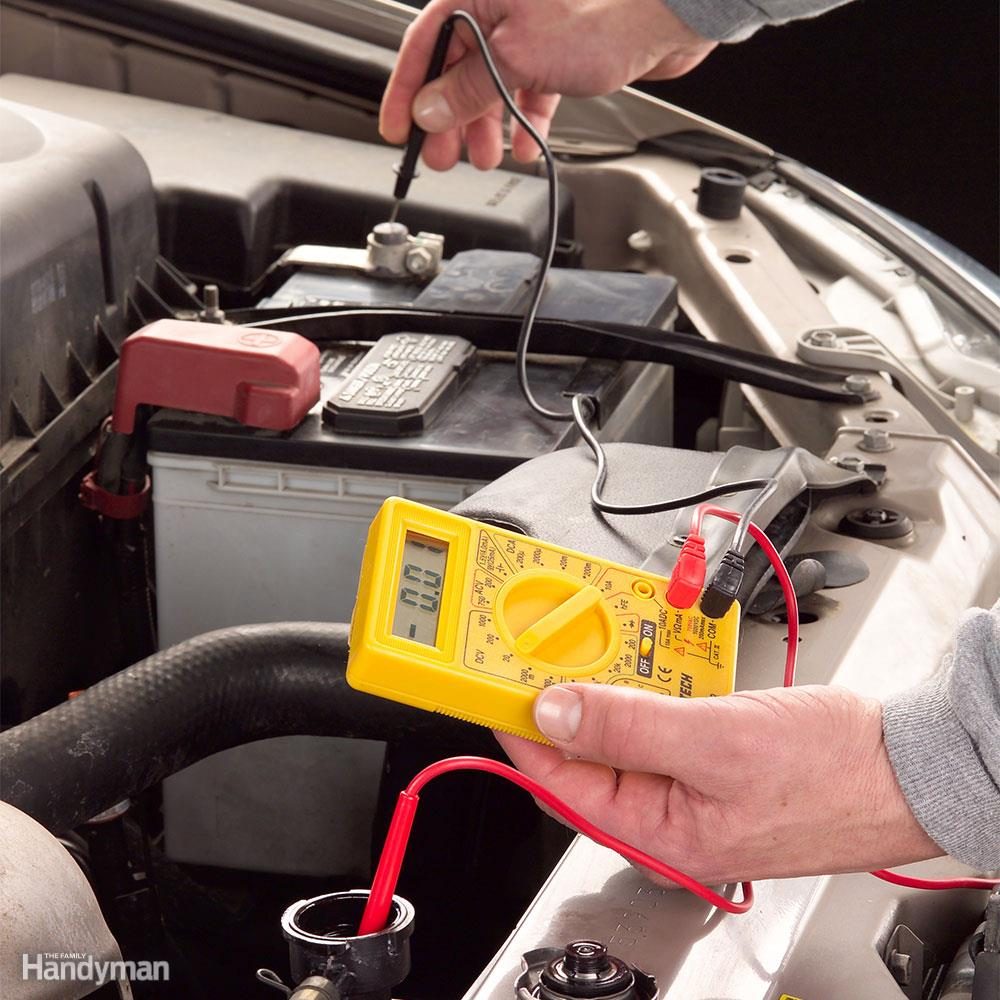
Check your coolant
Engine coolant does more than protect your engine from freezing and cracking. Coolant also contains anti-corrosive additives and water pump lubricants to keep your entire cooling system in tip-top shape. Test the level of your coolant’s freeze protection using an inexpensive tester. Suck in some coolant from the coolant reservoir and read the results on the scale printed on the tester. But don’t stop there. Just because coolant tests OK on the freeze protection doesn’t mean the additives are in good shape.
To check that, you’ll need a digital multimeter. Begin with a cold engine. Remove the radiator cap and start the engine. Set your digital multimeter to DC volts at 20 volts or less. When the engine reaches operating temperature, insert the positive probe directly into the coolant. Rev the engine to 2,000 rpm and place the negative probe on the negative battery terminal. If the digital meter reads .4 volts or less, your coolant is in good condition. If it’s greater than .4 volts, the additives are exhausted, and you may be in the market for a new radiator, a water pump, or a heater core in the future. All of those are far more expensive than a simple coolant change.
Read more on how to test coolant using a multimeter.
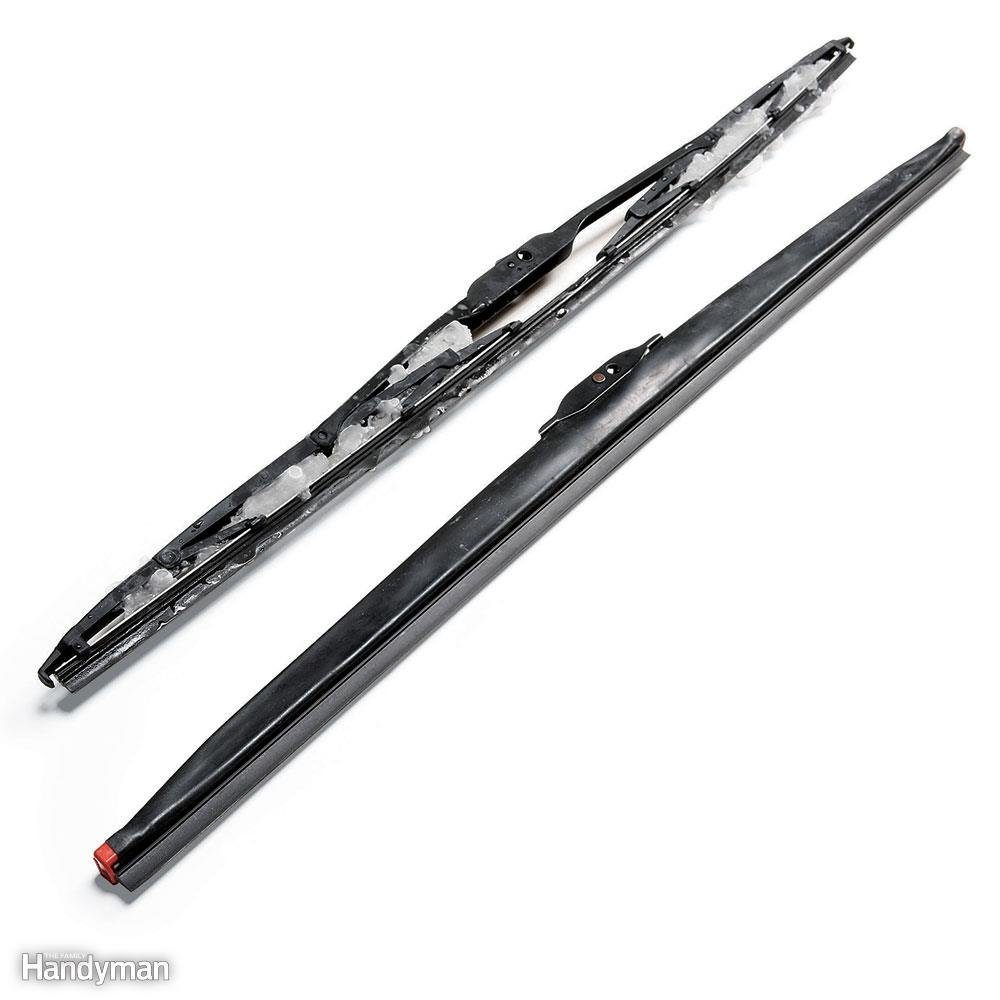
Switch to winter wiper blades
Ordinary wiper blades get packed with snow, causing the blade to streak or miss large swaths of your windshield. Winter wiper blades eliminate that problem. The entire blade is wrapped in a rubber boot that prevents ice and snow from sticking or packing. They make for much better visibility and safer winter driving. Find winter wiper blades at any auto parts store. Remove your old wiper blades and store for use again next spring. Then snap on the winter wiper blades and see clearly all winter.
Learn how to replace wiper blades with these step-by-step instructions.
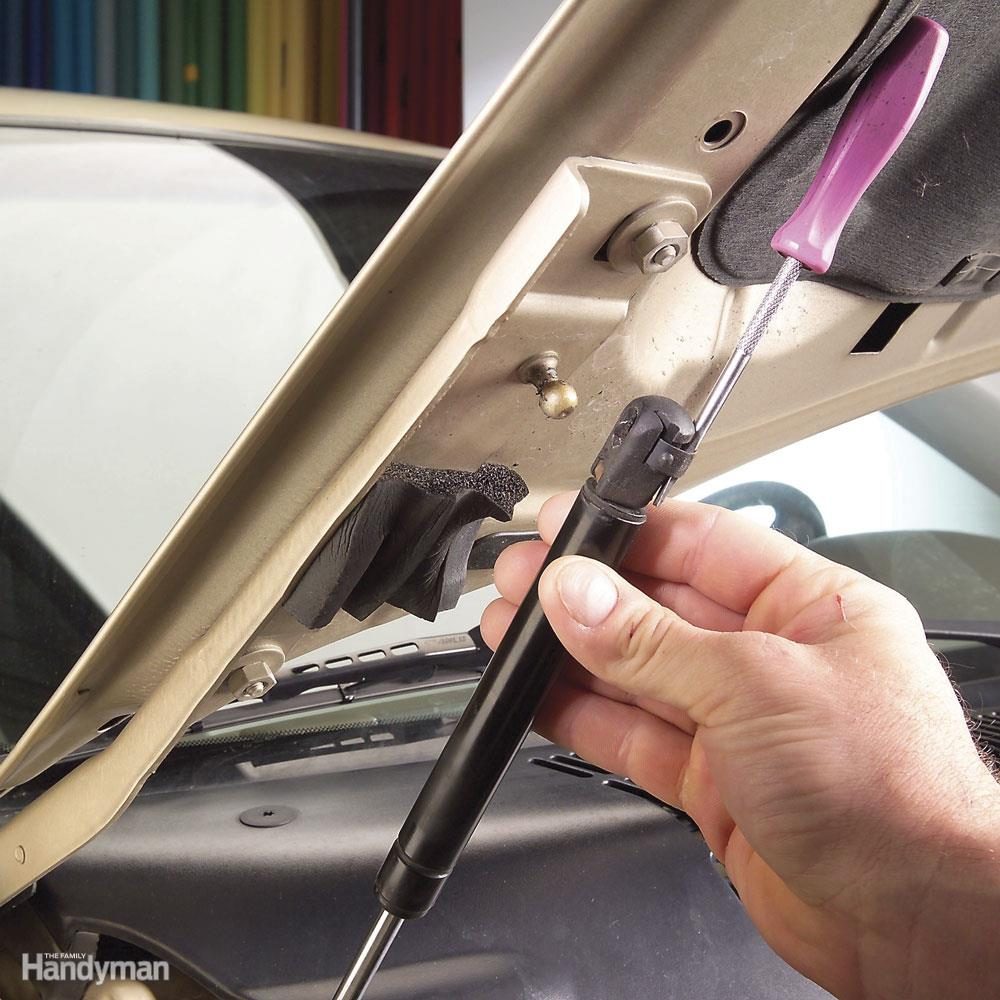
Check and replace your hood lifts
If the gas lift cylinders that keep your hood open are weak when it’s warm outside, they’ll quit working completely when temperatures dip below freezing. Hood and rear hatch lifts are available at any auto parts store. Since both the left and the right lifts receive the same amount of wear, you should always replace them in pairs. Right- and left-side lifts often differ in subtle ways, so ask the store clerk to label them for you.
Get a friend to hold the hood open while you replace the lift. Propping the hood with a piece of wood is a recipe for a head injury. The lifts attach to the hood and fender with bolts or a ball and socket arrangement. The bolt styles are easy to identify. Just remove the bolts and replace the lift. The ball and socket styles have a “C”-shaped clip that prevents the socket from popping off the ball. To remove the ends from the ball studs, just insert a small flat blade screwdriver into the centre of the clip to pry it out. That’ll allow you to disengage the ball and socket. Use the screwdriver to pry out the C-clip on the replacement lift and snap the end onto the ball.
Find out which car repairs you’ve probably wasted money on.
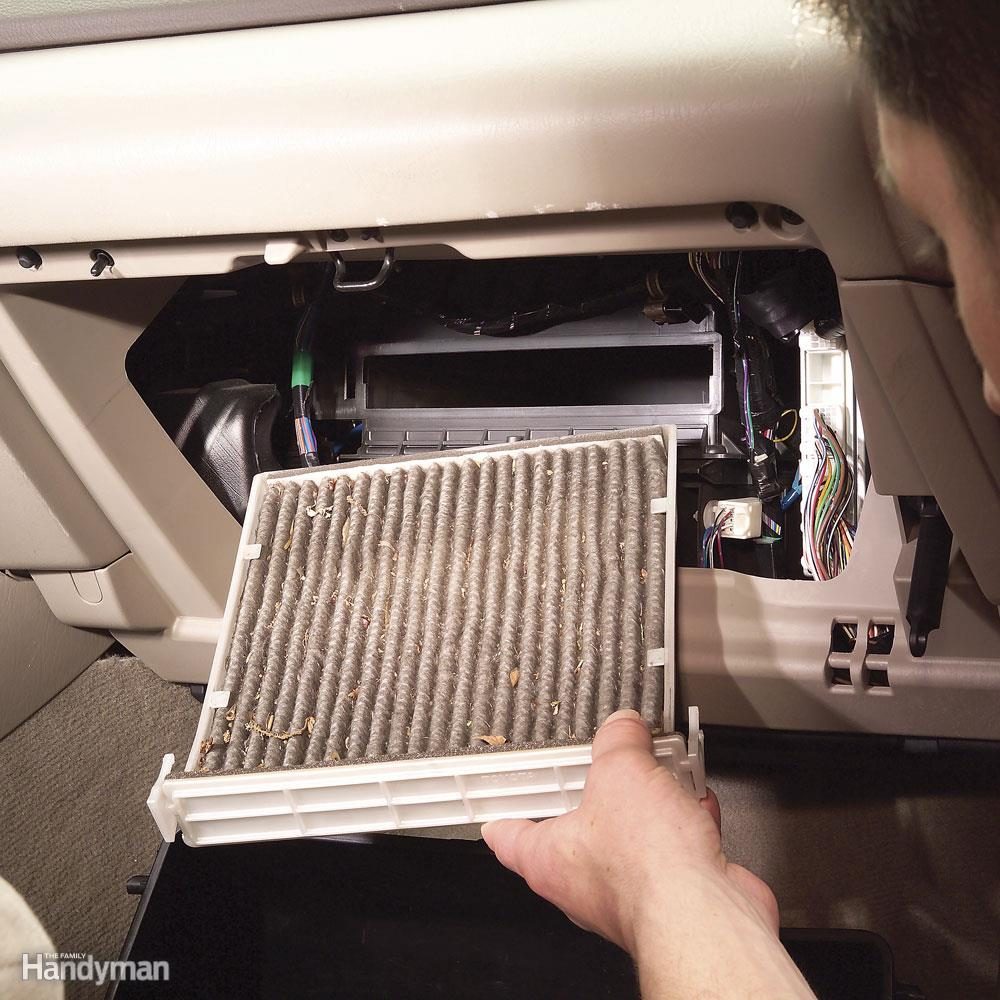
Replace the cabin air filter
Cabin air filters are one of the most neglected maintenance items on late model cars and trucks. You may think it’s unimportant, but a clogged cabin air filter can dramatically reduce airflow through your car’s heater, stressing the blower motor and overheating the blower motor resistor. Blower motor replacement on some cars can cost as much as $400, so it really pays to replace your cabin air filter before heating and cooling season. Buy a replacement filter at any auto parts store and refer to the installation instructions shown in your owner’s manual.
Here are more facts about cabin air filters most people don’t know.
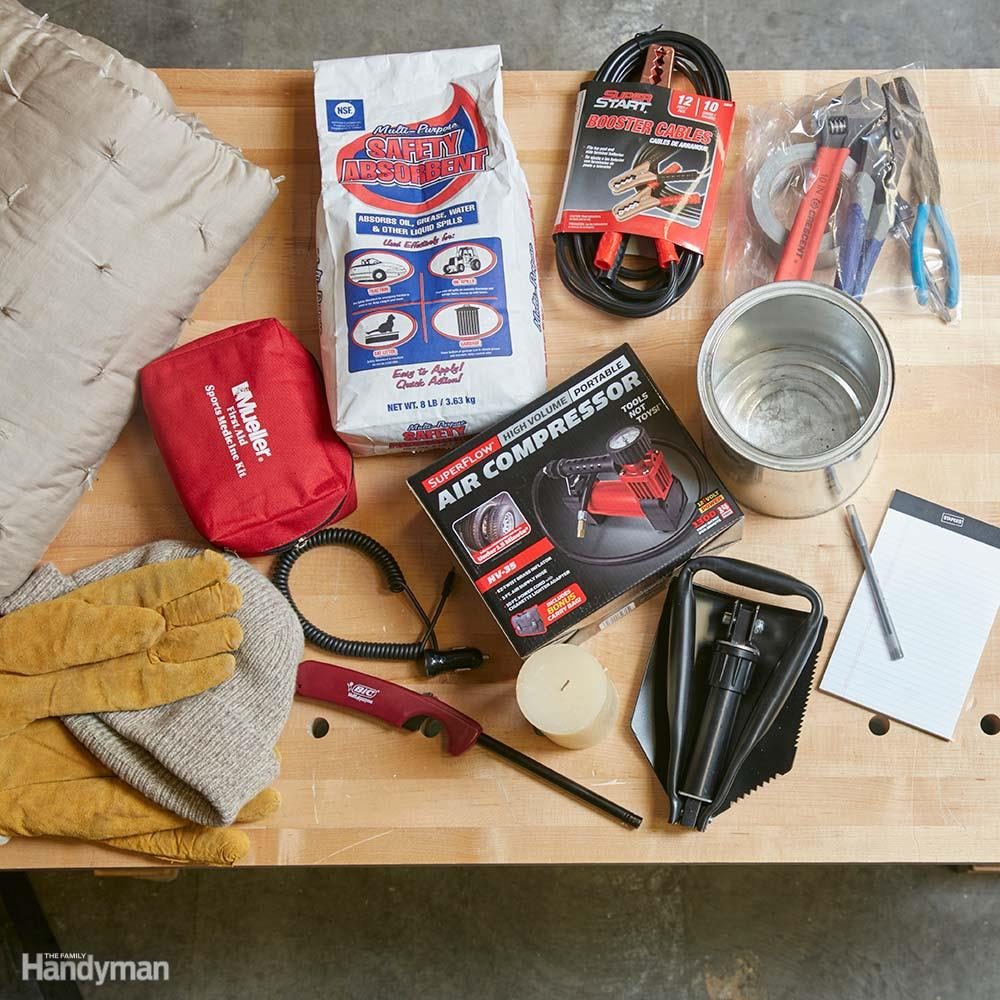
Build your own winter survival kit
You probably already have a few of the items in this winter car survival kit in your garage but they and few other things belong in the car! All you need to do is put them together in a box, in your car, during winter for roadside emergencies. So equipped, you’ll be ready to deal with most winter roadside breakdowns, and avoid getting frostbite or freezing to death in the process! This is particularly true for those of you that live or drive through rural, sparsely populated areas where being stuck in a blizzard can cost you your life.
Find out why light snow is just as dangerous as a snowstorm.
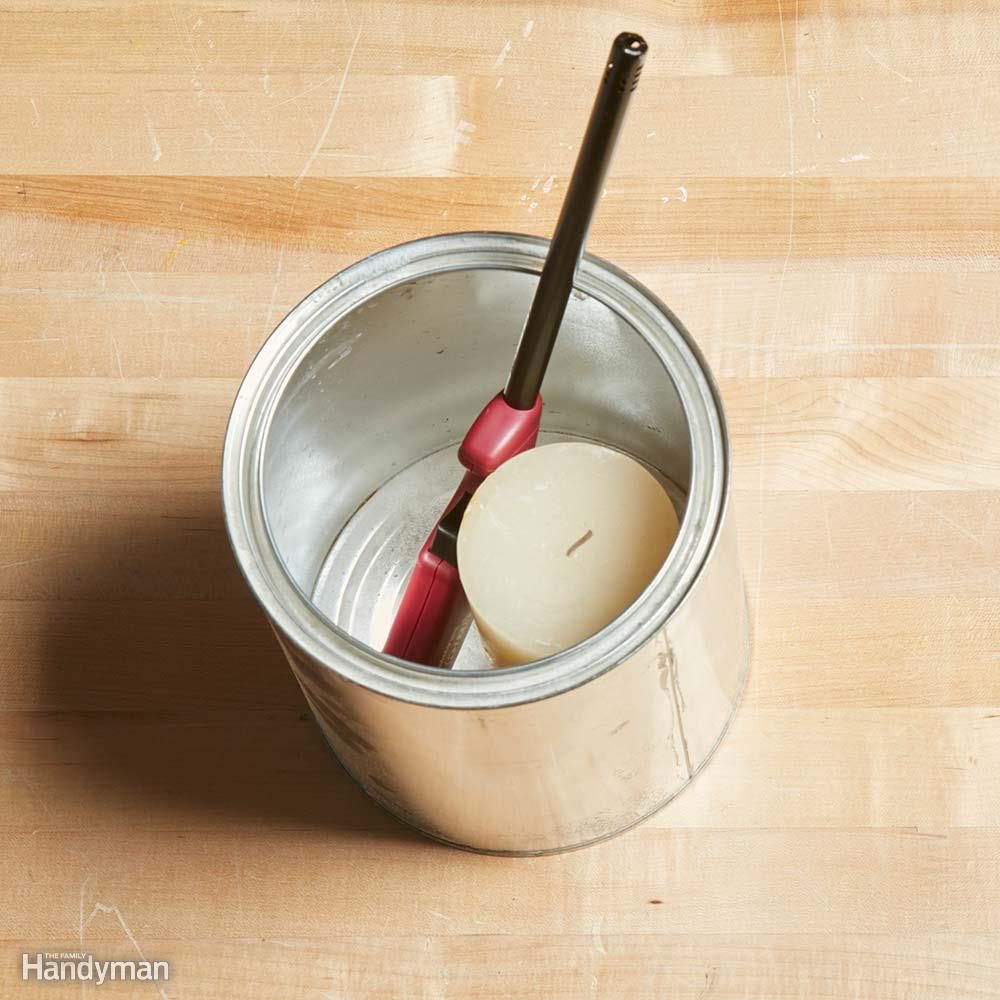
Candle-powered heater
When your car is stuck or broke down in the winter, keeping it running to stay warm can be dicey. For one thing, you’ll eventually run out of gas (though your car can run for a few hours on a full tank) and you’ll need some fuel when help arrives to get your car moving again or when the weather clears up. But more importantly, snow and ice can block your engine’s exhaust and lead to deadly levels of carbon monoxide in the car’s cabin. So make sure you pack a simple candle-powered heater. All you need is a metal can, a candle, and a lighter. A candle can make a surprisingly effective ad hoc heater in the confined space of a car.
Here are more roadside emergency kit essentials.
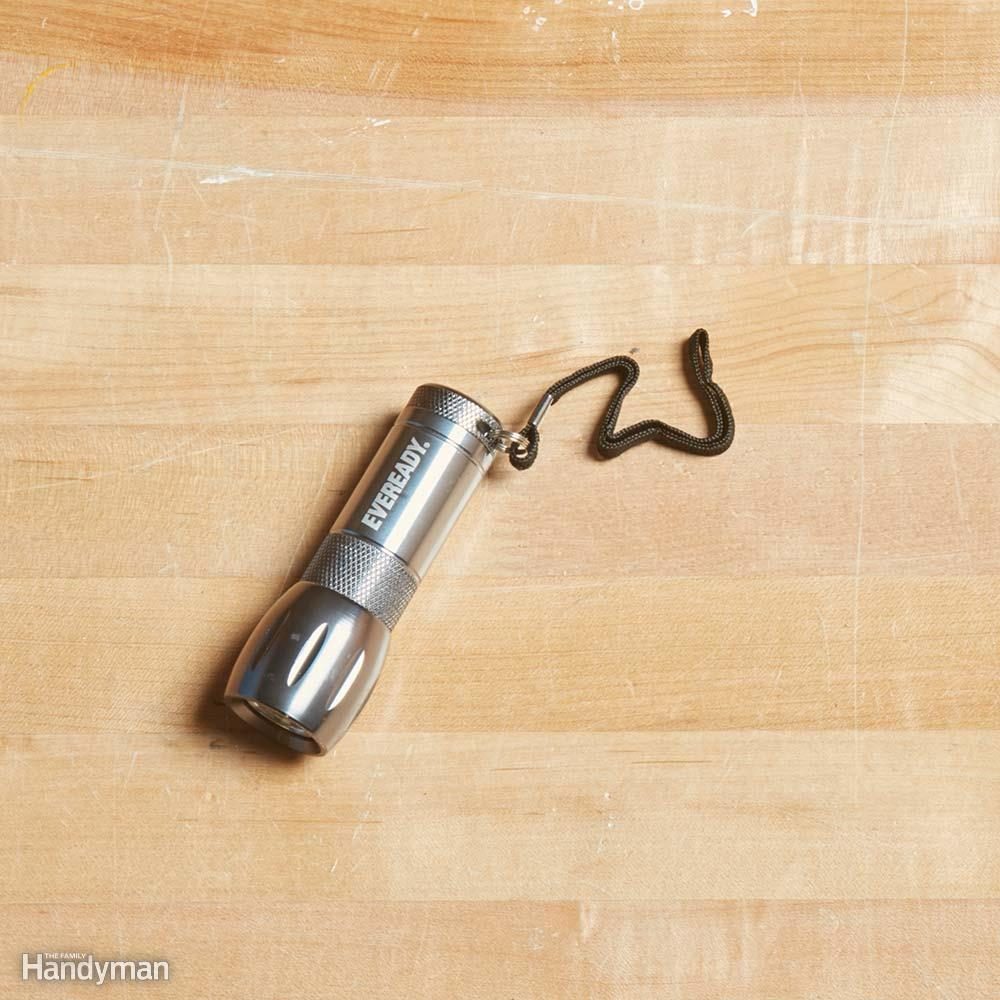
Small LED flashlight
Make sure your car kit contains a small LED flashlight with fresh batteries. Flashlights are a godsend for changing flats, or to see under the hood to find any quick fixes. And once the sun sets, you’ll want something to illuminate the interior of the cabin for writing down notes, phone numbers, etc. And in some cases, you can use the flashlight to signal oncoming cars or help a tow truck pinpoint your location.
Here’s exactly what to do when your car won’t start.
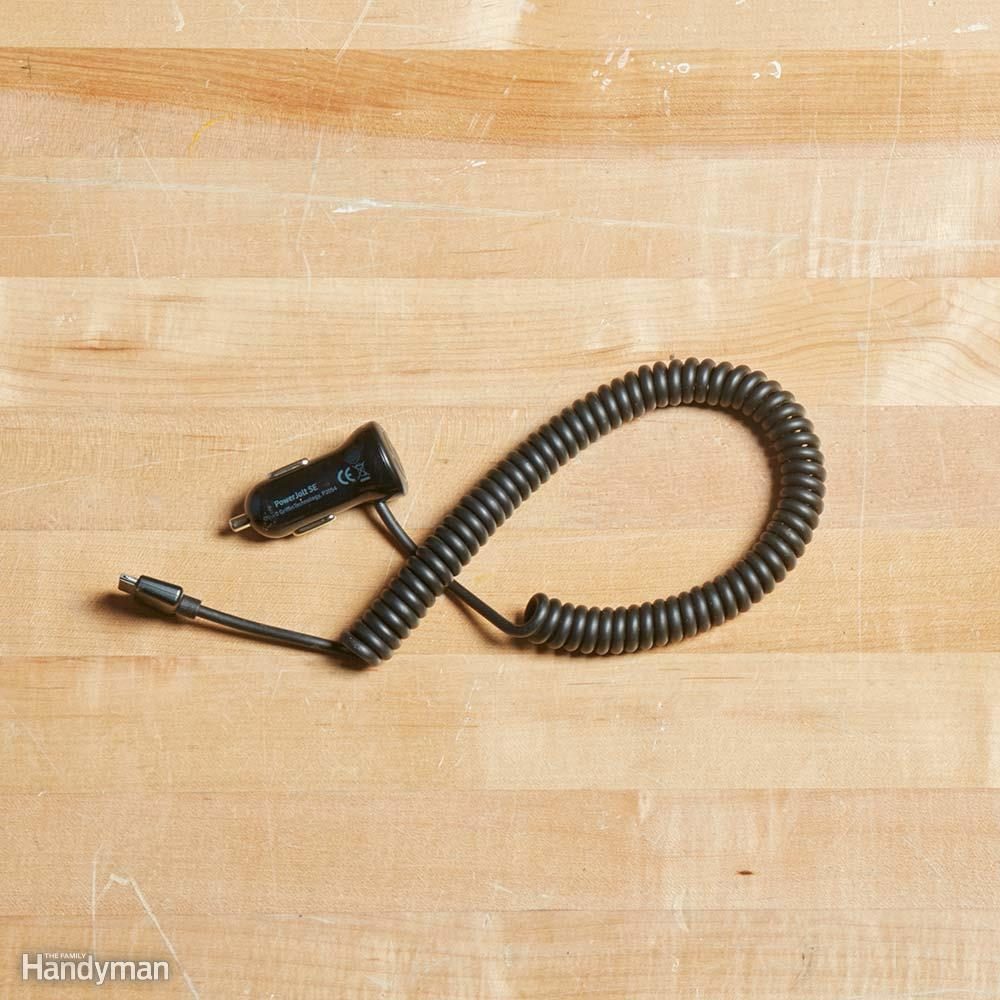
Cell phone car charger
Cell phones are welcome lifelines when your car is stuck, but they’re only effective when they’re charged. So keep a spare cell phone charger in your survival kit to keep your phone charged up.
Check out more car gadgets that make driving safer.
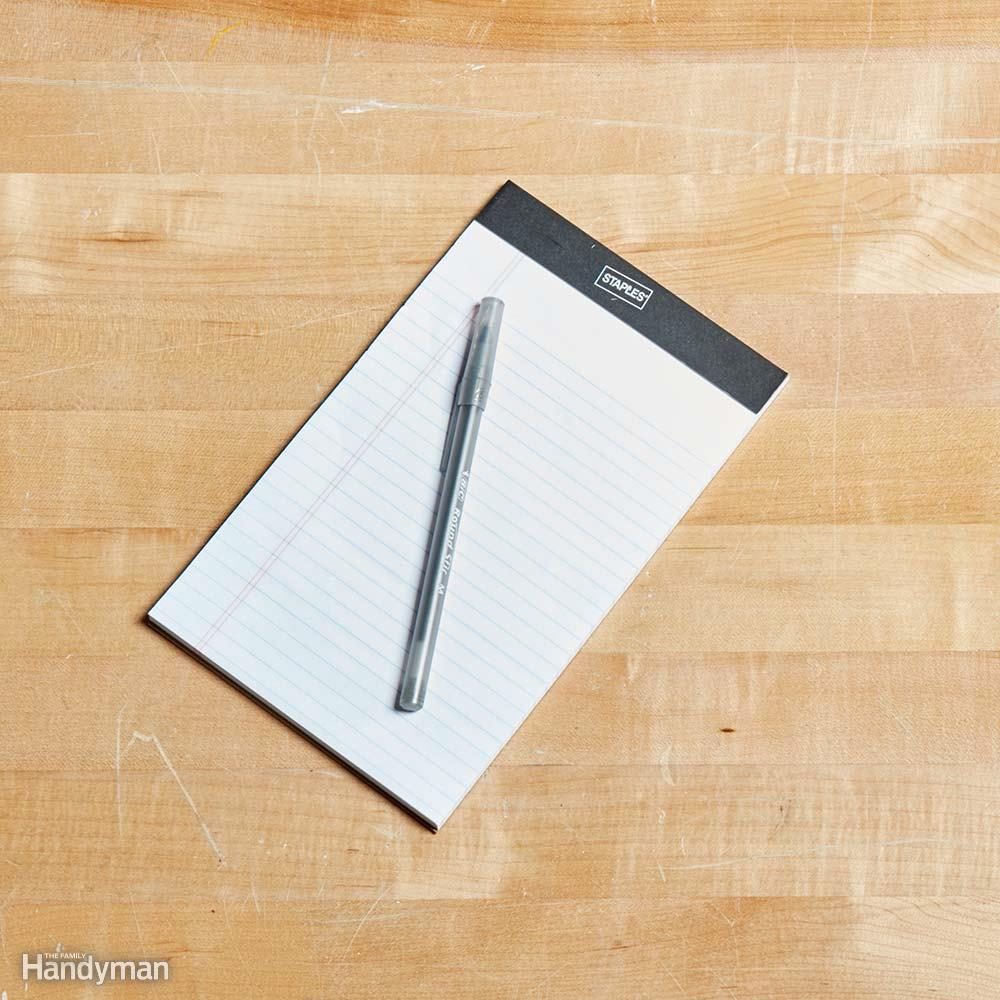
Notepad and pen or pencil
When you call for a tow, there are likely additional phone numbers a dispatcher will give you, as well as a possible incident number. Or if you’re in an accident, you’ll need the other driver’s license and plate number. If your pen isn’t writing, it could be frozen, so warm it up between your hands. Or you can use a trusty pencil, too (though it might be harder to read in poor lighting).
Find out more things you should always keep in your car’s glove box.
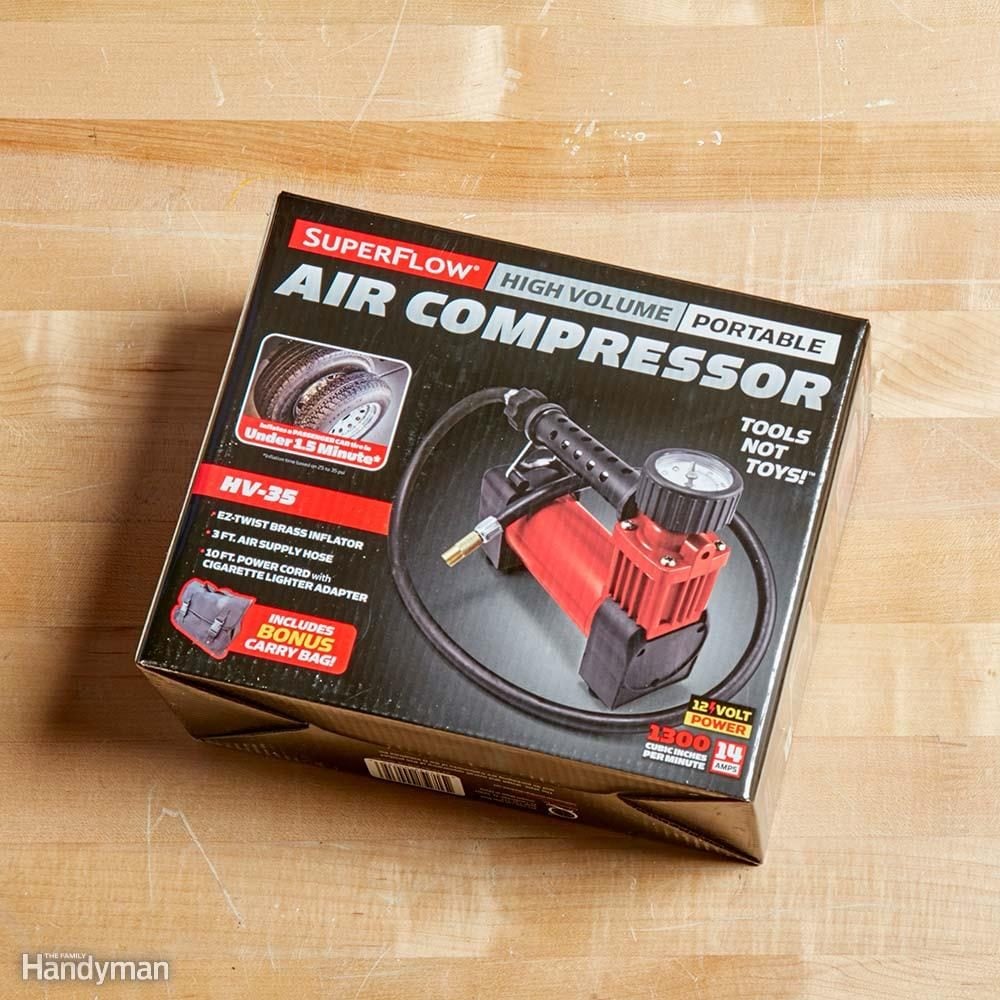
Portable air compressor
Powered by the 12v outlet in your car, a portable air compressor doesn’t take up much space and can help fill low tires or, more importantly, fill a flat or low spare tire. Tire pressure-related tire failures are surprisingly common, so it’s always a good idea to check your tires regularly.
This is the ideal tire pressure in cold weather.
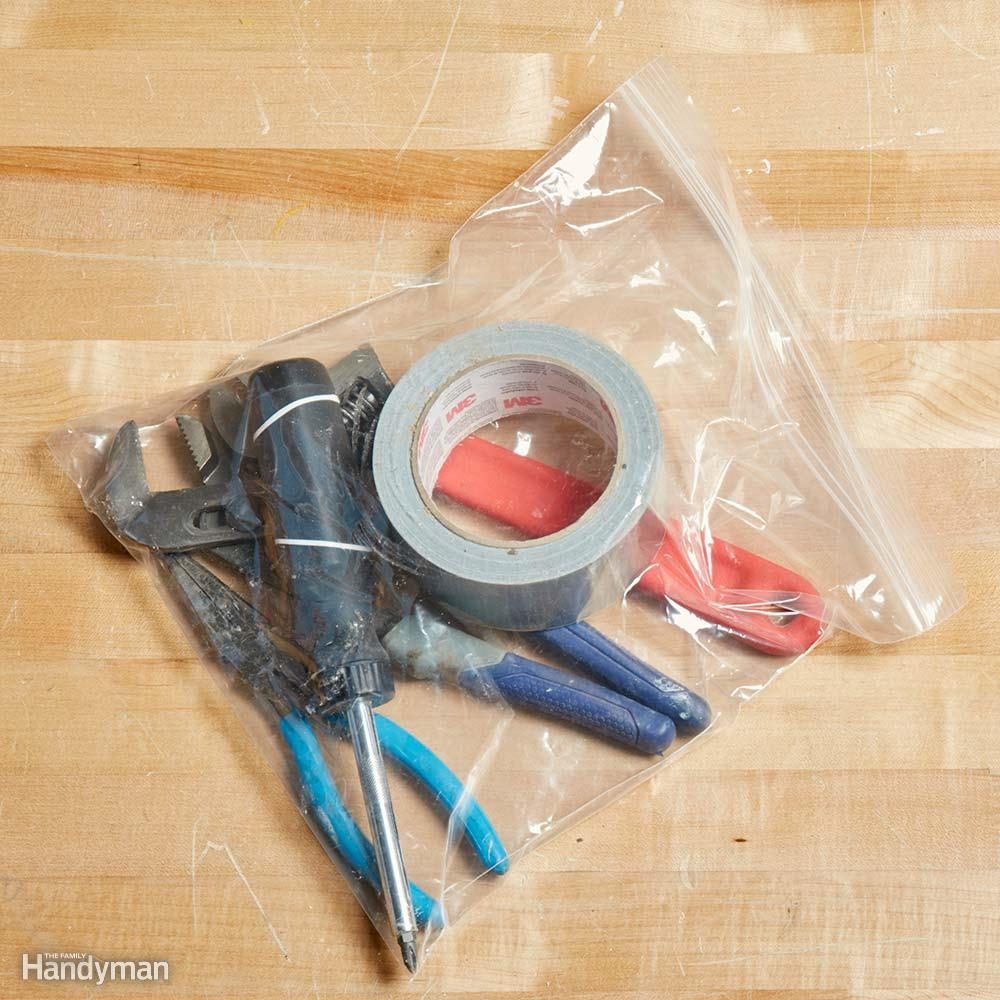
Simple tool kit
There are a few roadside fixes that can be accomplished with some common tools. Pack a couple screwdrivers, pliers, an adjustable wrench, and some duct tape. If you can get your car moving again and to a service station with a few MacGyver tricks, you’ll not only get home safe and sound, you’ll save yourself the cost of a tow.
Here are 20 tools every home mechanic needs.
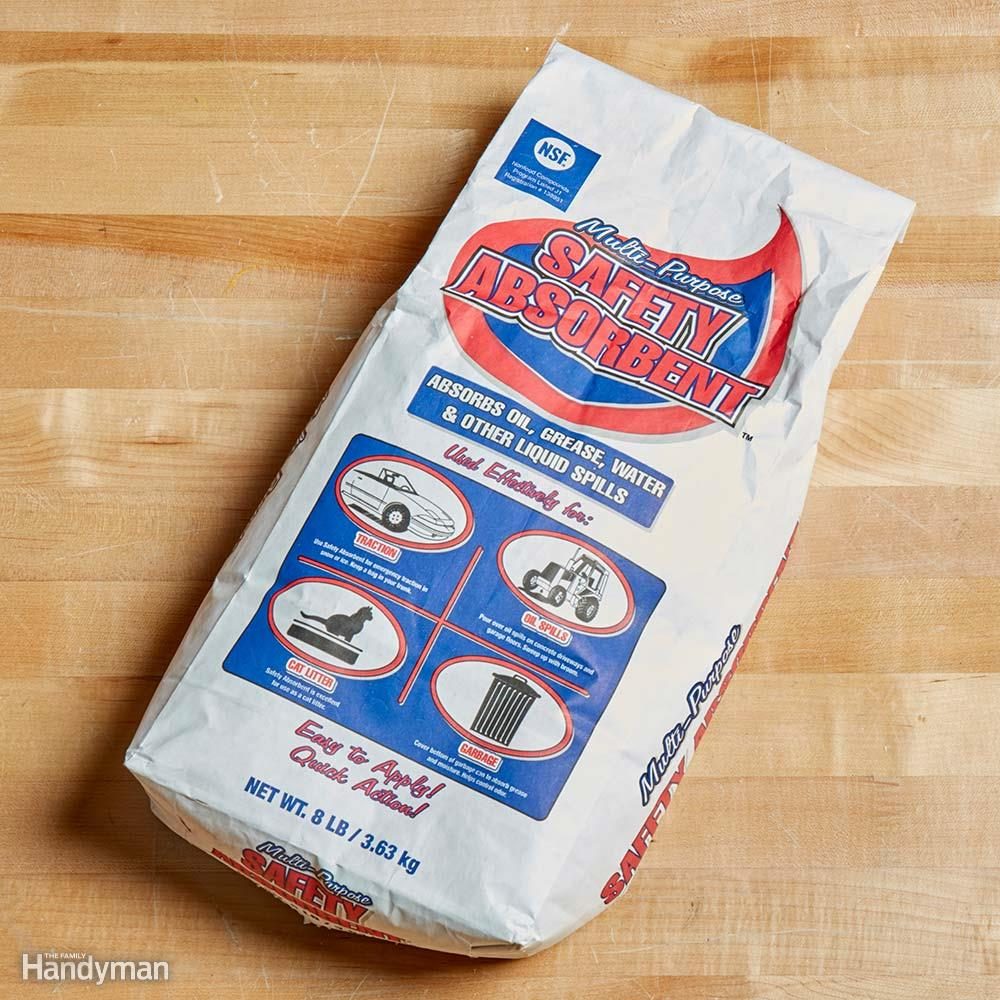
Safety absorbent
A small bag of safety absorbent can help your car regain traction when you’re stuck on ice. Cat litter also works, but floor sweep absorbent works better. (Sold at auto parts stores, it’s sprinkled on garage floors before sweeping to absorb oil and grease.) Do you have four-wheel drive? Make sure you know how to use it, especially in winter.
This is the difference between all-wheel drive and four-wheel drive.
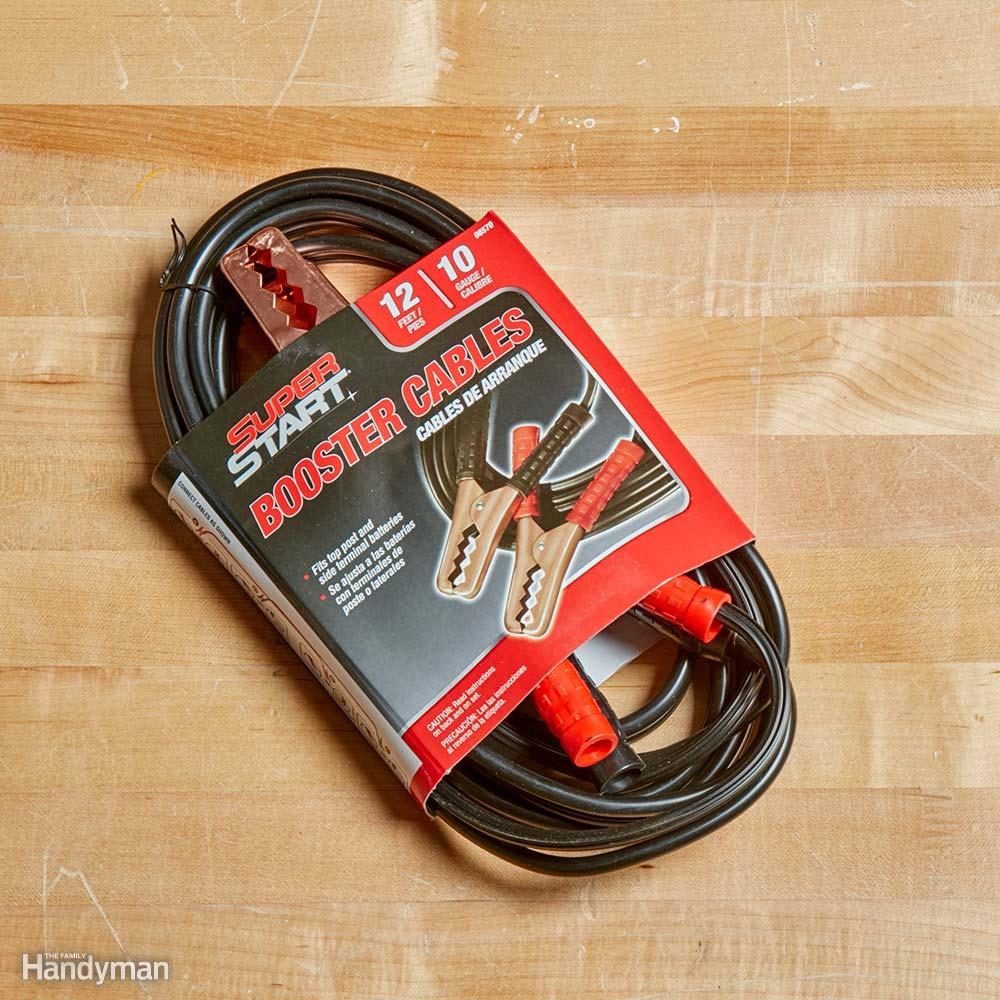
Jumper cables
You should never count on another motorist to have jumper cables for you to borrow—carry your own. They’re inexpensive and could mean the difference between a helpful motorist helping you get your car started or paying a tow truck to do it.
Make sure you also know how to jump-start your car safely.
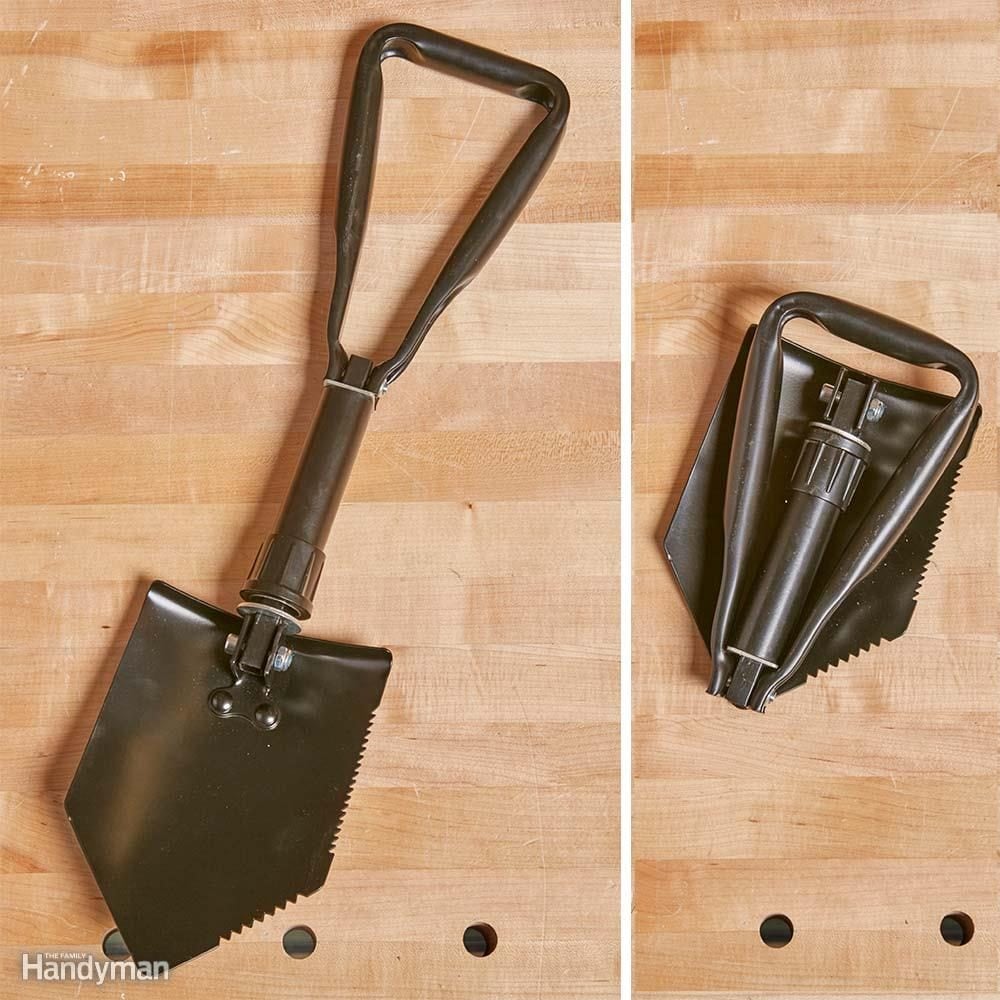
Foldable shovel
Digging out compacted snow from under the car or around the wheels is much easier with a proper shovel. Plus, using your hands, even in gloves, can cool you down fast. When you don’t have room for a full-size shovel (and really, who does?), the next best thing is a foldable shovel. You can pick them up online or in surplus stores.
Here’s why you should always keep a carpet remnant in your trunk.
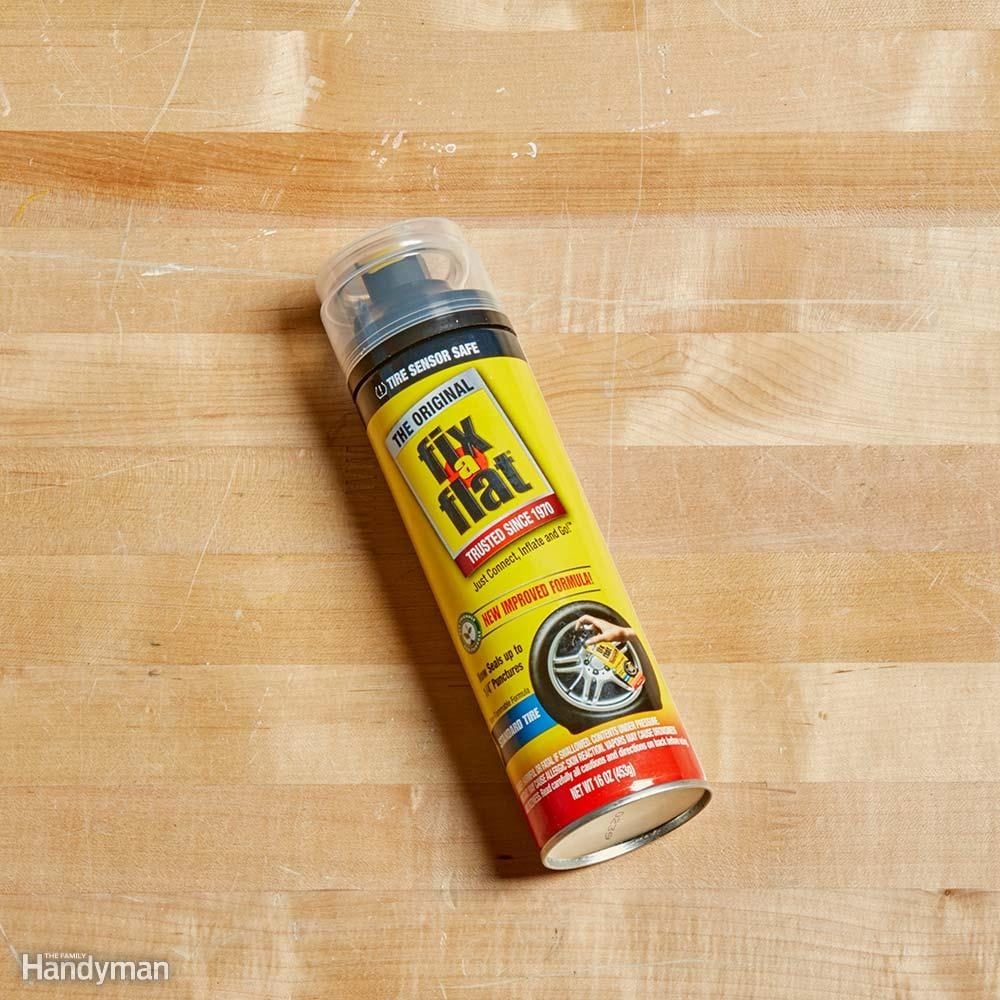
Fix-a-flat
Sometimes, when you’re lucky, a can of fix-a-flat (or two cans for larger tires on SUVs and trucks) can get you back on the road without having to put on your spare (which can be a real hassle in the cold). Remember, fix-a-flat isn’t intended to be a permanent solution, just a stopgap measure until you can find a tire shop. But fix-a-flat has to be warm to dispense. So either keep it in the cab or warm it over the defroster before using.
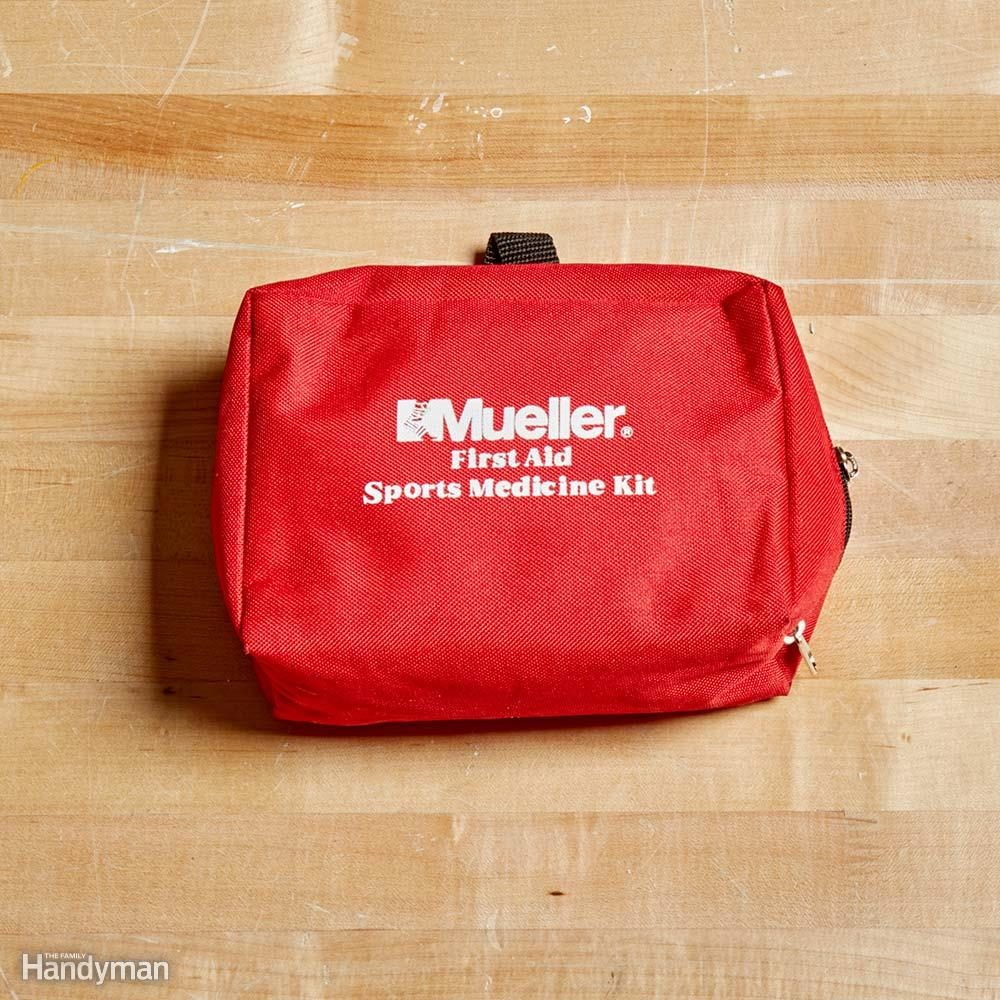
First aid kit
Keep the essentials in your car—including spare medications if you need them—to make sure you can stay alert while you’re waiting. Brush up on your first aid skills so you’re ready if the situation calls for something more than a bandage.
Here’s what every first aid kid needs.
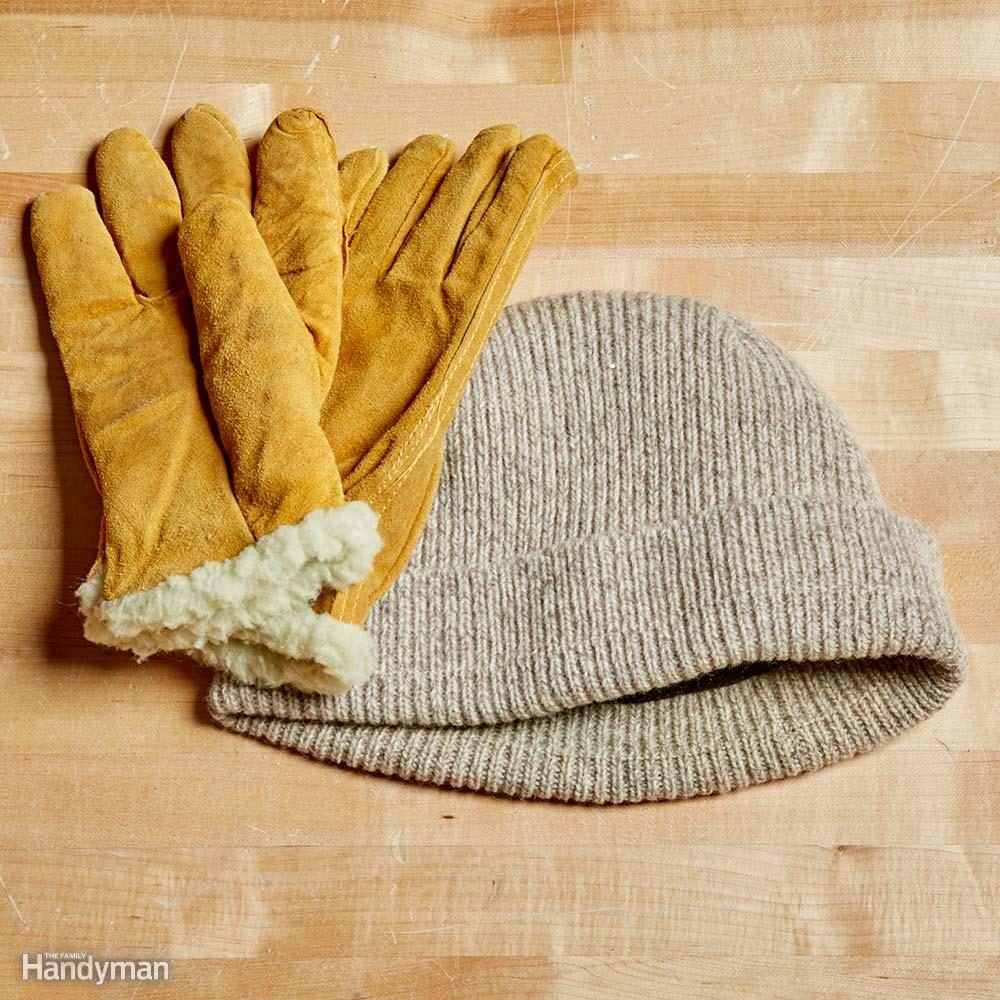
Warm hat and gloves
Staying warm is the most important survival tactic when you’re stranded in the winter. It’s always a good idea to have an extra hat and gloves so you (or an under-clothed guest) can keep warm while getting your car out of a ditch, changing a tire, or taking a look under the hood.
Here are more ways to stay warm in a car that has no heat.
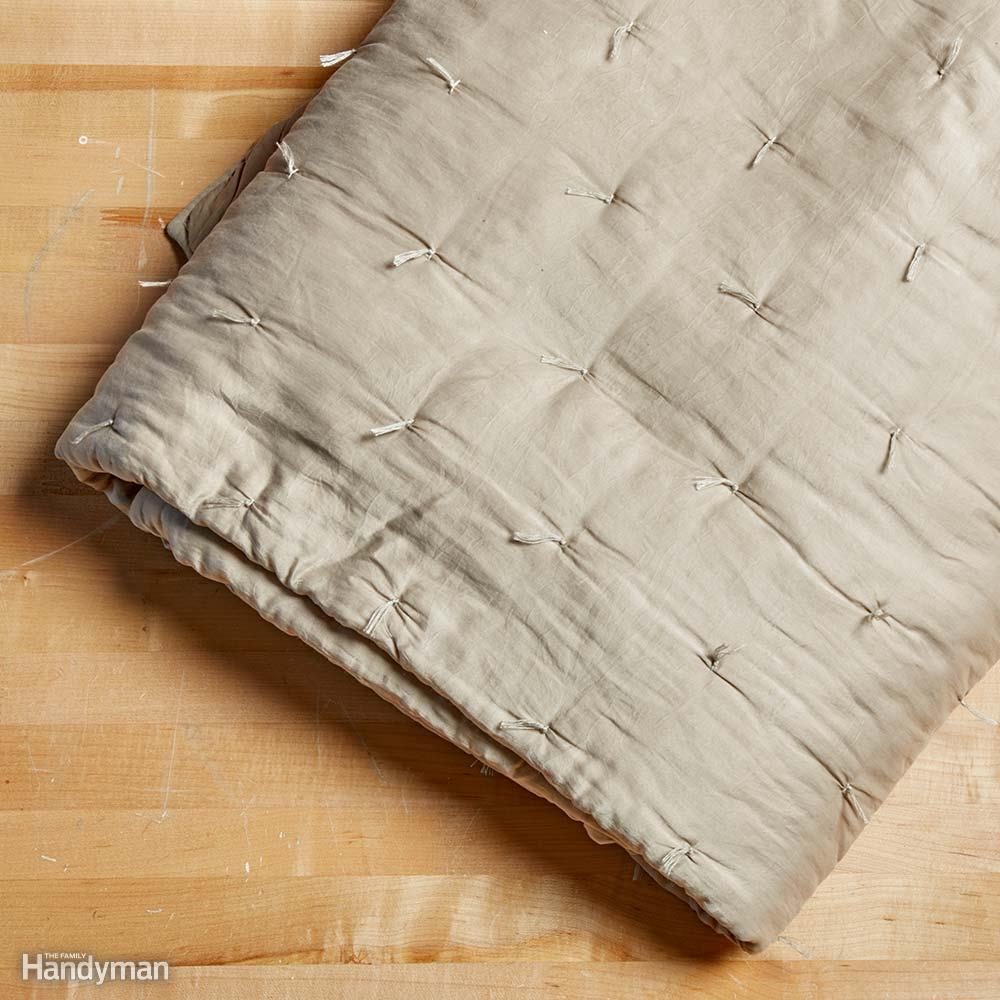
Warm blanket
It could be a while before help arrives, so you need to keep warm. A spare blanket will help you do just that. Keep in mind it’s likely to get dirty, so choose an old comforter or quilt.
Next, find out 13 winter driving mistakes that could put you in danger.